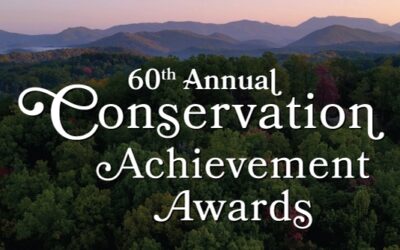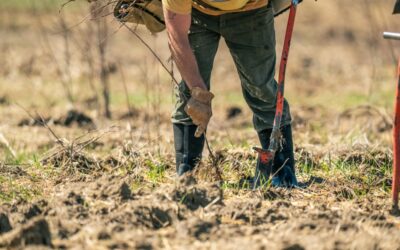For 75 years, Tennessee Wildlife Federation has been dedicated to conserving our state’s great outdoors. That commitment has only grown but how we work has evolved over the decades.
One way that hasn’t changed in more than a half-century is highlighting the individuals and companies improving Tennessee’s wildlife, waters, and wild places. No one group can do or fix everything, so celebrating those putting in the effort is an important piece of encouraging others to do the same.
The story from our history shows how one business went above and beyond what was required, benefiting Tennessee’s natural environment.
Eastman: ‘1984 Industrial Conservationist’
This story originally appeared in the Kingsport Times-News in 1985. Story truncated for space.
Bolstered by an odor control program and its chemicals from a coal plant, Tennessee Eastman recently nabbed a top industry conservation award recognizing the plant for exceeding what the government requires for environmental protection.
Named 1984 Industrial Conservationist, Eastman was chosen over about six other companies for the Tennessee Wildlife Federation award… The Federation only bestows its industrial conservationist award when it believes a company merits the recognition. The group first named a recipient in 1975, but since then has only given the award to six other Tennessee firms.
Tennessee Wildlife Federation Executive Director Tony Campbell said the award recipients are firms that, considering their manufacturing process and byproducts, could do extensive damage if they were not conscientious.
“Eastman has a tremendous impact on the environment and it’s in a situation where it could cause a lot of trouble. But these folks have gone above and beyond the government regulations to safeguard the environment by upgrading water discharged and they’ve done a lot in air quality and then there’s the community efforts in odor control,” Campbell said.
For the award, the Federation cited at least three Eastman programs, proving the firm has exceeded government regulations for environmental control.
They are:
Odor Control. Eastman began using scentometers and olfactometers for evaluating odor intensity and a gas chromatograph to identify odor-causing chemicals. Employees were assigned to report odors to the company’s operating divisions so that they could be traced and controlled. A call-in network also was devised so that community residents could report foul odors.
Chemicals from coal. In a major plant expansion, Eastman’s chemicals from a coal plant is expected to aid in energy conservation. … The plant’s dust emissions were minimized by unloading and transporting coal in enclosed structures. And water used for cooling and scrubbing is reused in the facility rather than being dumped.
Wildlife conservation. With the Watauga Audubon Society, Eastman recently opened a bird observation area called Meadowview Marsh, near the Meadowview Golf Course. Eastman added a walkway through the nature area, which hosts homes for wood ducks, killdeer and a variety of bird species. Covering about three acres, the property includes and man-made marsh and dike, three ponds, a stream, reeds, rushes and cattails.
In 2021, Eastman continues to make progress toward reducing its impact on the environment.
Earlier this year, the company announced its plan to build a $250 million plastic-to-plastic molecular recycling facility. Their goal is to recycle more than 500 million pounds of plastic waste annually by 2030.




